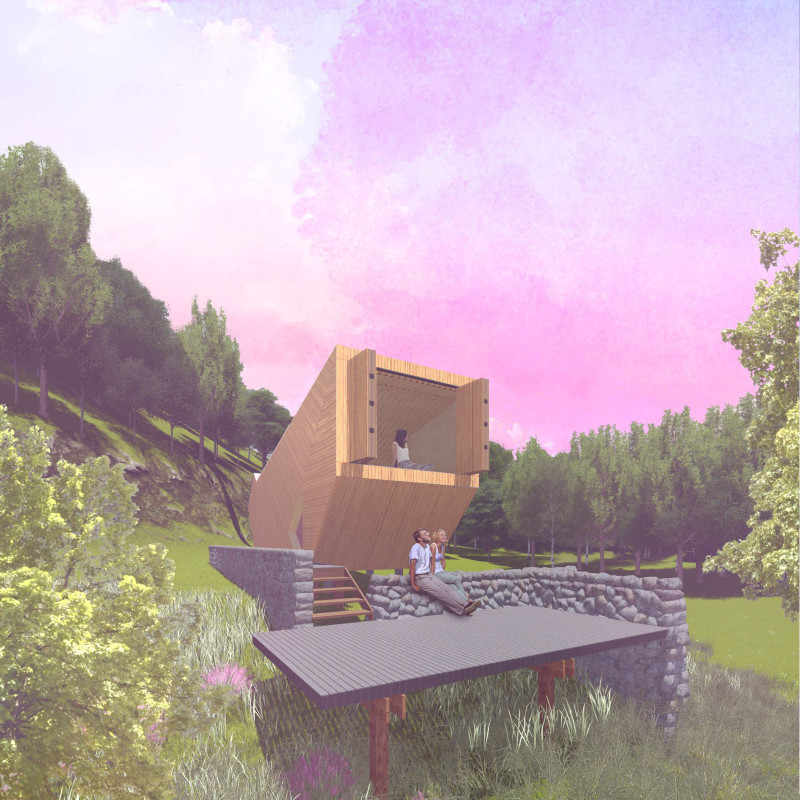5 key facts about this project
The Belvedere of the Valley is designed with a focus on wellness and connection to nature. Located in a tranquil landscape, the cabin serves as a retreat for yoga and meditation. It encourages users to immerse themselves in their surroundings while finding peace and reflection. The overall design concept revolves around balancing private spaces with areas that open to the natural environment, creating a setting that invites both solitude and engagement.
Spatial Organization
The layout showcases two main areas positioned on opposite sides of an interior courtyard, which acts as a central hub for the structure. This courtyard welcomes visitors and connects them to the adjacent therapy room, enhancing the cabin's functionality. Large openings allow natural light to enter, creating a bright atmosphere and visual links to the outside landscape.
Flexible Design Elements
The design features a yoga room separated by a bamboo wall that offers flexibility for different activities. This adjustability supports various uses and personal preferences. The meditation space is elevated and accessible by a ladder leading to a mezzanine level. This elevated position enhances the user's experience by providing views of the natural surroundings, drawing them into the environment.
Materiality and Aesthetic
Materials are chosen thoughtfully to establish a connection with nature. Wood and stone are the primary elements, reinforcing a sense of place. Wood cladding creates a warm, inviting atmosphere, while Corten steel and concrete provide subtle contrast without overwhelming the main materials. This careful selection emphasizes tranquility and harmony throughout the design.
Engagement with Nature
Elevated on concrete footings, the cabin remains above the ground and encourages interaction with the surrounding landscape. This elevation creates a sense of lightness, making the structure feel as though it is floating. The outdoor form features playful lines that mimic the patterns in the natural habitat, fostering a dialogue between the architecture and its environment. This attention to detail invites visitors to appreciate both the cabin and its natural context.






















































